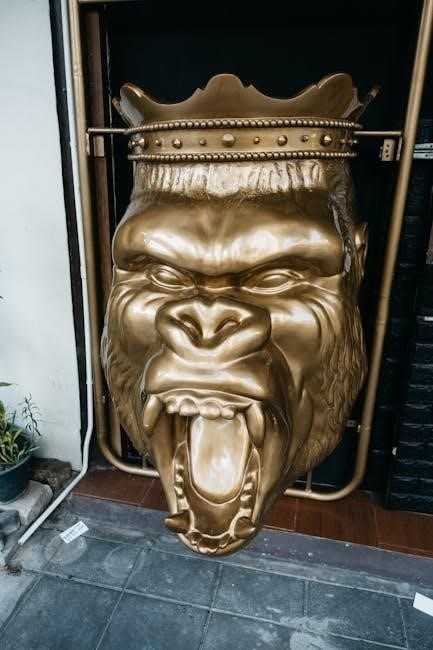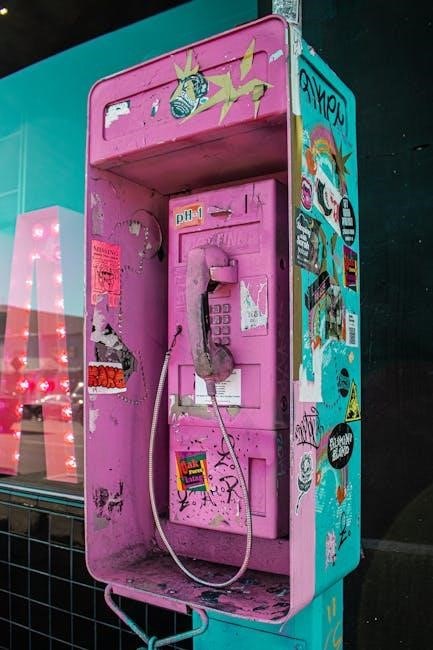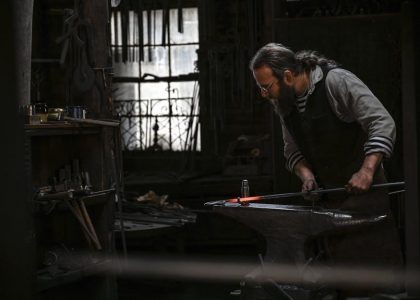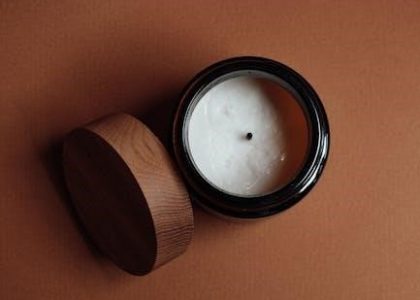Pre-Installation Checks
Ensure the installation site is level, clear, and meets local building codes․ Verify power supply matches boiler requirements and check gas line compatibility before proceeding․
1․1․ Choosing the Right Location for the Boiler
Selecting a suitable location for your Crown boiler is critical․ Ensure the area is well-ventilated, accessible, and free from flammable materials․ The boiler should be installed on a level surface, away from living spaces to minimize noise․ Consider proximity to water and gas lines to simplify connections․ Always adhere to local building codes and manufacturer guidelines for optimal performance and safety․ Proper placement ensures efficient operation, reduces installation complexity, and complies with safety regulations․
1․2․ Verifying Electrical and Gas Connections
Before installation, verify that electrical and gas connections meet Crown boiler specifications․ Ensure the power supply matches the boiler’s voltage and amperage requirements․ Check gas lines for proper sizing and pressure, and confirm they are compatible with the boiler’s fuel type․ Inspect all connections for leaks or damage․ Ensure the main power switch is easily accessible․ Proper connections are essential for safe and efficient operation, preventing potential hazards like gas leaks or electrical malfunctions․ Always follow manufacturer guidelines and local safety standards during this process․
1․3․ Checking Compatibility with Existing Heating System
Ensure the Crown boiler is compatible with your existing heating system․ Check radiator types, pipe sizes, and fluid compatibility to avoid system conflicts․ Verify the boiler’s BTU capacity matches your heating demands․ Inspect existing controls and thermostats for integration potential․ Confirm the system’s water pressure and flow rate align with boiler specifications․ Address any mismatches to prevent inefficiency or damage․ Consult local codes and manufacturer guidelines for proper integration․ Compatibility ensures seamless operation and optimal performance of the entire heating system․ Proper checks prevent potential issues during installation and operation․

Unpacking and Preparing the Boiler
Carefully unpack the Crown boiler and accessories, ensuring no damage occurred during shipping․ Inspect all components for completeness and condition before proceeding with installation․
2․1․ Unpacking the Boiler and Accessories
Carefully remove the boiler and all included accessories from the packaging․ Inspect each component for any visible damage or signs of wear․ Ensure all necessary parts, such as gas valves, venting components, and electrical connections, are included․ Compare the contents with the manufacturer’s list to confirm completeness․ Handle the boiler with care to avoid accidental damage․ If any items are missing or damaged, contact Crown Boiler customer support immediately․ Keep the packaging until installation is complete and ensure all accessories are within reach for the next steps․
2․2․ Inspecting for Damage or Missing Parts
After unpacking, perform a thorough examination of the boiler and accessories for any signs of damage, such as dents, rust, or broken components․ Check for completeness by cross-referencing with the parts list provided by Crown Boiler․ Ensure all critical components, like gas valves, venting parts, and electrical connectors, are included and undamaged․ Handle the boiler gently to prevent further damage․ If any parts are missing or damaged, document the issues and contact Crown Boiler customer support immediately for assistance or replacements before proceeding with installation․

Installation Steps
Position the boiler securely, ensuring level placement․ Connect water pipes, gas lines, and electrical components carefully․ Properly vent the boiler to ensure safe and efficient operation․
3․1․ Positioning the Boiler
Position the boiler on a level, stable surface away from flammable materials․ Ensure it is securely anchored to prevent movement․ The location must provide adequate ventilation and easy access for maintenance․ Follow the manufacturer’s guidelines for clearance from walls and other obstacles․ Proper positioning ensures safe operation and efficiency․ Always refer to the Crown Boiler installation manual for specific placement requirements․ Correct alignment is crucial for venting and piping connections․ Ensure the boiler is installed in an area that complies with local building codes and safety standards․
3․2․ Connecting Water Pipes
Connect the water pipes according to the Crown Boiler manual, ensuring proper sizing and alignment․ Check for leaks at all connections and test the system under pressure․ Use compatible materials to avoid corrosion․ Ensure the flow and return pipes are correctly identified and connected․ Follow safety guidelines to prevent water damage or system malfunction․ Properly secure all fittings to maintain integrity․ Refer to the manufacturer’s instructions for specific piping requirements․ Testing the system before finalizing ensures safe and efficient operation․ Always prioritize leak prevention and correct water flow direction for optimal performance․
3․3․ Installing Gas Lines
Install gas lines according to the Crown Boiler manual, ensuring correct sizing and secure connections․ Use approved materials and follow local gas codes․ Test for leaks using a soap solution or gas leak detector․ Ensure proper ventilation and comply with safety guidelines․ Connect the gas supply line to the boiler’s gas inlet, verifying the correct pressure․ Secure all fittings tightly and test the system under operating conditions․ Refer to the manufacturer’s instructions for specific requirements․ Proper installation ensures safe and efficient operation of the boiler․
3․4․ Venting the Boiler
Proper venting is crucial for safe and efficient boiler operation․ Use a listed power venter, sized and installed according to the manufacturer’s instructions․ Ensure the venting system complies with local regulations and boiler specifications․ Install vents securely, avoiding leaks or obstructions․ Test the system for proper airflow and vent termination․ Ensure the vent pipe is correctly routed to prevent gas leakage into the building․ Follow Crown Boiler’s guidelines for venting materials and configurations․ Proper venting prevents carbon monoxide hazards and maintains optimal performance․ Refer to the manual for specific venting requirements and safety precautions․
3․5․ Connecting Electrical Components
Connect electrical components with care․ Ensure the main power supply matches the boiler’s requirements․ Install a dedicated circuit as specified in the manual․ Connect the thermostat, igniter, and sensors securely․ Follow Crown Boiler’s wiring diagram for accurate connections․ Test all circuits for proper function and ensure no loose wires․ Use appropriate grounding to prevent electrical hazards․ Refer to the manual for specific voltage and amperage ratings․ Ensure all electrical connections comply with local codes and safety standards․ Power up the system and verify all components operate correctly․ Always turn off the power before making any adjustments or repairs․

Startup and Testing
Power up the boiler and perform initial safety checks․ Ensure the pilot light ignites and water flows correctly․ Test gas and water connections for leaks․
4․1․ Initial Power-Up and Safety Checks
Upon initial power-up, ensure the pilot light illuminates, indicating the system is operational․ Check for any unusual noises or vibrations․ Verify that the fill solenoid opens and water begins to flow into the boiler․ Inspect all connections for leaks, especially around gas lines and water pipes․ Ensure proper ventilation to avoid carbon monoxide buildup․ Review the control panel to confirm all settings are correct and the system responds appropriately to temperature adjustments․ If any issues arise, shut off power and consult the manufacturer’s troubleshooting guide before proceeding․
4․2․ Testing Gas and Water Connections
After installation, perform a thorough test of all gas and water connections to ensure there are no leaks․ Turn on the main power and allow the system to run through a full cycle․ Use a gas leak detector to verify the integrity of gas lines and connections․ Check water pipes for any signs of moisture or dripping․ If any leaks are detected, immediately shut off the system and address the issue․ Properly test the pressure relief valve to ensure it functions correctly․ Ensure the boiler operates smoothly and efficiently before finalizing the installation․

Safety Guidelines
Always follow manufacturer’s safety instructions and ensure proper ventilation․ Use protective equipment during installation and operation to prevent accidents and ensure compliance with safety standards․
5․1․ Ensuring Proper Ventilation
Proper ventilation is crucial for safe boiler operation․ Ensure the boiler room has adequate airflow to prevent gas buildup․ Install vents as per manufacturer guidelines, typically requiring a direct connection to the outside․ Use approved venting materials to maintain system integrity․ Regularly inspect vents for blockages or damage․ Proper ventilation ensures efficient combustion and reduces the risk of carbon monoxide accumulation, promoting a safe environment․ Always adhere to local building codes and manufacturer recommendations for venting systems․
5․2․ Following Manufacturer’s Safety Instructions
Always adhere to the Crown Boiler’s safety guidelines provided in the manual․ These instructions are designed to ensure safe installation and operation․ Follow specific directives for electrical connections, gas line hookups, and venting systems․ Ignoring these instructions can lead to hazards such as gas leaks or carbon monoxide poisoning․ Regularly review the manual to stay updated on safety protocols․ Compliance with manufacturer recommendations ensures optimal performance and minimizes risks․ Safety should never be compromised; always prioritize the guidelines outlined by Crown Boiler for a secure and efficient setup․

Maintenance and Upkeep
Regularly inspect and clean the boiler to ensure efficiency and safety․ Schedule annual professional maintenance to check for potential issues and ensure optimal performance․
6․1․ Regular Cleaning and Inspection
Regular cleaning and inspection are crucial for maintaining your Crown boiler’s efficiency and longevity․ Start by turning off the power and allowing the unit to cool down completely․ Use a soft brush or vacuum to remove dust and debris from the exterior and vents․ Inspect the heat exchanger for signs of corrosion or damage․ Check all connections and pipes for leaks․ Clean the burner and combustion chamber according to the manufacturer’s instructions․ Replace any worn-out seals or gaskets to prevent air leaks․ Finally, ensure the drain valve is functioning properly to remove any sediment buildup; This routine maintenance will help prevent costly repairs and ensure safe operation․ Always refer to the Crown boiler manual for specific guidance on cleaning and inspection procedures․ Proper upkeep not only enhances performance but also extends the lifespan of your boiler․ Regular maintenance is essential for optimal functionality and safety․ By following these steps, you can keep your Crown boiler running efficiently for years to come․
6․2․ Scheduling Annual Professional Maintenance
Scheduling annual professional maintenance is essential for ensuring your Crown boiler operates safely and efficiently․ A licensed technician will perform a thorough inspection, checking for any potential issues such as gas leaks, worn-out components, or blockages in the venting system․ They will also clean the burner, inspect the heat exchanger, and test the boiler’s performance under load․ Additionally, the technician will ensure all safety controls are functioning correctly and recommend any necessary repairs․ Regular professional maintenance can prevent unexpected breakdowns, improve energy efficiency, and extend the lifespan of your boiler․ Always use a Crown-authorized service provider for compliance with manufacturer guidelines․ This annual checkup is a critical part of maintaining your boiler’s warranty and ensuring reliable heating performance throughout the year․ By scheduling this maintenance, you can enjoy peace of mind knowing your system is operating at its best․ Proper upkeep is key to maximizing your boiler’s performance and longevity․

Troubleshooting Common Issues
Identify and resolve common issues like pilot light failure, low water pressure, and gas leaks․ Refer to the Crown boiler manual for detailed diagnostic steps and solutions․
7․1․ Diagnosing Pilot Light Problems
Check if the pilot light is lit and steady․ If it’s out or flickering, ensure the gas supply is on․ Inspect for blockages in the pilot orifice or venting issues․ Consult the Crown boiler manual for specific diagnostic steps․ Verify electrical connections to the ignition module․ If issues persist, contact a certified technician to avoid safety hazards․ Always follow safety guidelines when handling gas components․
7․2․ Addressing Low Water Pressure
Check the boiler’s feed valve to ensure it’s fully open․ Verify the water pressure gauge reading, which should be between 12-25 psi․ If pressure is low, inspect for leaks in the system or faulty pressure-reducing valves․ Bleed radiators to remove airlocks, which can cause pressure drops․ Consult the Crown boiler manual for specific reset procedures if pressure issues persist․ Ensure all valves are open and functioning correctly․ If problems remain, contact a professional to assess and repair the system, as low pressure can lead to inefficient heating or boiler damage․

Understanding the Control Panel
The control panel allows monitoring and adjusting boiler settings․ Use the digital interface to set temperature, timers, and operating modes․ Refer to the manual for detailed guidance․
8․1․ Navigating the Boiler’s Digital Interface
The Crown boiler’s digital interface offers user-friendly navigation․ Use the touchscreen or buttons to access settings, monitor system status, and adjust parameters like temperature and timer schedules․ The interface displays real-time data, including current temperature, pressure, and error codes․ For detailed guidance, refer to the Crown Boiler manual, which provides step-by-step instructions on utilizing the interface effectively․ Familiarize yourself with the menu options to optimize boiler performance and troubleshoot issues efficiently․
8․2․ Setting Temperature and Timers
Setting the temperature and timers on your Crown boiler ensures efficient operation․ Use the digital interface to set desired water temperature between 100°F and 200°F․ Program timers to align with your schedule, enabling the boiler to operate during specific hours․ Refer to the Crown Boiler manual for detailed instructions on configuring these settings․ Proper temperature and timer settings optimize energy use, reduce costs, and maintain consistent heating․ Ensure all adjustments are saved to maintain customized preferences for reliable performance․

Compliance with Local Regulations
Ensure installation adheres to local building codes and safety standards․ Obtain necessary permits and follow all regional regulations for boiler installation and operation․
9․1․ Adhering to Building Codes
Adhering to local building codes is crucial for a safe and compliant boiler installation․ Ensure the installation meets all regional safety standards and regulatory requirements․ Always install according to the manufacturer’s specifications and local ordinances․ Verify that the boiler’s venting system, electrical connections, and gas lines comply with building codes․ Proper clearance and ventilation must be maintained as per code requirements․ Failure to comply may result in legal issues or safety hazards․ Always consult local authorities for specific guidelines and ensure all inspections are completed before finalizing the installation․
9․2․ Obtaining Necessary Permits
Obtaining the required permits is essential before starting the boiler installation․ Check with local authorities to determine the necessary permits for gas, electrical, and plumbing work․ Ensure all permits are approved and compliant with regional regulations․ Delays in obtaining permits can postpone the installation, so plan accordingly․ Keep records of all permits for future reference and inspections․ Failure to secure proper permits may lead to fines or legal consequences․ Always follow the manufacturer’s guidelines and local regulations to avoid complications during the installation process․

Manufacturer Support and Resources
Crown Boiler provides detailed manuals and dedicated customer support․ Access user guides online or contact their service team for assistance with installation or troubleshooting․
10․1․ Accessing Crown Boiler Manuals
Crown Boiler manuals are readily available online for download․ Users can access PDF versions of installation and operation guides for models like the XBF-SPD and BDS series․ These manuals provide detailed instructions for proper setup, maintenance, and troubleshooting․ They also include safety guidelines and technical specifications․ By visiting the official Crown Boiler website or authorized distributors, customers can ensure they have the most up-to-date information․ These resources are essential for installers and homeowners to maximize efficiency and safety․ Regularly updated manuals reflect the latest industry standards and product improvements․
10․2․ Contacting Customer Service
For assistance with Crown Boiler installations or troubleshooting, contact their customer service team․ They are available to address technical inquiries, provide repair guidance, and offer support for specific models like the AWR series․ Customers can reach out via phone, email, or through the official website․ Ensure to have the boiler model number and serial number ready for efficient support․ Crown Boiler’s customer service is dedicated to resolving issues promptly and ensuring optimal performance of their products․ Reaching out early can prevent minor issues from becoming major problems, ensuring longevity and reliability of the boiler system․
Successful installation ensures safety and efficiency․ Always follow Crown Boiler’s guidelines for optimal performance and consult the manual for further assistance and manufacturer support․
11․1․ Final Checklist for Successful Installation
- Confirm all safety checks are completed and documented․
- Verify electrical, gas, and water connections are secure and leak-free․
- Ensure proper ventilation and venting systems are installed․
- Test the boiler’s operation and controls for functionality․
- Review and comply with local building codes and regulations․
- Obtain all necessary permits and approvals․
- Dispose of packaging and waste responsibly․
- Provide user manuals and guides to the homeowner or operator․
Ensure all steps are followed for a safe and efficient Crown Boiler installation․





